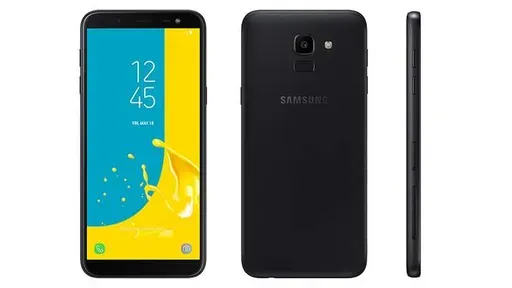The Motorola Moto G5 Plus is a mid-range smartphone that strikes a balance between affordability and functionality. Released in early 2017, it was part of Motorola's popular G-series lineup, which has consistently delivered solid performance at a reasonable price point. While it may not compete with flagship devices in terms of raw power or cutting-edge features, the G5 Plus offers a reliable user experience that caters to everyday needs without breaking the bank.
Design and Build Quality
At first glance, the Moto G5 Plus doesn’t scream premium, but it doesn’t feel cheap either. The aluminum unibody design gives it a sturdy and polished look, a step up from the plastic backs of its predecessors. The phone has a 5.2-inch display with a Full HD resolution (1920 x 1080 pixels), which is sharp and vibrant for its price range. The compact size makes it easy to handle with one hand, though the slightly thick bezels might feel dated compared to modern bezel-less designs. The fingerprint sensor on the front doubles as a navigation button, a clever use of space that adds to the phone’s usability.
The placement of buttons and ports is intuitive, with the power and volume buttons on the right side and a USB-C port at the bottom. A 3.5mm headphone jack is still present, which was becoming a rarity even back in 2017. The back panel is removable, but only to access the SIM and microSD slots—the battery is non-removable. Overall, the design is practical and functional, if not particularly flashy.
Display and Multimedia
The 5.2-inch IPS LCD display on the Moto G5 Plus is one of its strong suits. With a Full HD resolution, it delivers crisp text and vibrant colors, making it great for browsing, watching videos, or playing casual games. Brightness levels are adequate for indoor use, though it can struggle under direct sunlight. The lack of an OLED panel means blacks aren’t as deep, and contrast isn’t as striking as on more expensive phones, but for the price, it’s hard to complain.
Audio quality is decent but unremarkable. The single bottom-firing speaker gets loud enough for personal use but lacks depth and can sound tinny at higher volumes. The inclusion of a headphone jack is a plus for those who prefer wired headphones, and the audio output through it is clean and distortion-free at moderate volumes.
Performance and Software
Under the hood, the Moto G5 Plus is powered by a Qualcomm Snapdragon 625 chipset, paired with either 2GB, 3GB, or 4GB of RAM depending on the variant. The octa-core processor is efficient and handles day-to-day tasks like social media, email, and web browsing with ease. Multitasking is smooth with the 4GB RAM version, though the 2GB model might show some lag when switching between heavier apps.
Gaming performance is acceptable for casual titles like Candy Crush or Clash of Clans, but graphically intensive games like PUBG or Asphalt 9 will require lower settings to run smoothly. Thermal management is good, and the phone doesn’t get uncomfortably hot even during extended use.
One of the highlights of the Moto G5 Plus is its near-stock Android experience. Running Android 7.0 Nougat out of the box (upgradable to Android 8.1 Oreo), it offers a clean, bloatware-free interface with minimal Motorola additions. Features like Moto Display and Moto Actions add useful functionality without cluttering the experience. The lack of heavy skinning means the phone feels snappier than some competitors with similar hardware but more bloated software.
Camera Performance
The Moto G5 Plus sports a 12MP rear camera with an f/1.7 aperture, which was impressive for its price at the time. In good lighting, the camera captures detailed and well-exposed shots with accurate colors. The wide aperture helps in low-light situations, though noise becomes noticeable in darker environments. The autofocus is fast thanks to the dual-pixel technology, making it great for quick snaps.
The 5MP front-facing camera is adequate for selfies and video calls but lacks detail in less-than-ideal lighting. Video recording maxes out at 1080p, and while it’s stable, it doesn’t offer the crispness or dynamic range of higher-end devices. Overall, the camera system is competent for everyday use but won’t satisfy photography enthusiasts.
Battery Life and Charging
With a 3000mAh battery, the Moto G5 Plus delivers solid endurance. The Snapdragon 625’s power efficiency plays a big role here, allowing the phone to easily last a full day of moderate use. Even with heavier usage, you’ll likely make it to bedtime without needing a top-up. The included TurboPower charger provides quick charging, giving you several hours of use from just 15 minutes of charging—a handy feature for those in a rush.
Final Verdict
The Motorola Moto G5 Plus is a well-rounded mid-range phone that excels in key areas like display quality, battery life, and software experience. While it may not have the flashiest design or the most powerful hardware, it delivers reliable performance at an affordable price. If you’re looking for a no-nonsense smartphone that gets the basics right, the G5 Plus is a strong contender.
Motorola Moto G5 Plus Specifications:
Display: 5.2-inch IPS LCD, 1920 x 1080 pixels (Full HD), 424 PPI
Processor: Qualcomm Snapdragon 625, octa-core 2.0 GHz Cortex-A53
RAM: 2GB / 3GB / 4GB (varies by region and model)
Storage: 32GB / 64GB, expandable via microSD up to 256GB
Rear Camera: 12MP, f/1.7 aperture, dual-pixel autofocus, 1080p video
Front Camera: 5MP, f/2.2 aperture
Battery: 3000mAh, non-removable, TurboPower charging
OS: Android 7.0 Nougat (upgradable to Android 8.1 Oreo)
Connectivity: USB-C, 3.5mm headphone jack, Wi-Fi 802.11 a/b/g/n, Bluetooth 4.2
Dimensions: 150.2 x 74 x 7.7 mm
Weight: 155g
Other Features: Fingerprint sensor, water-repellent nano-coating

By /Jun 4, 2025

By /Jun 4, 2025

By /Jun 4, 2025

By /Jun 4, 2025

By /Jun 4, 2025

By /Jun 4, 2025

By /Jun 4, 2025

By /Jun 4, 2025

By /Jun 4, 2025

By /Jun 4, 2025

By /Jun 4, 2025

By /Jun 4, 2025

By /Jun 4, 2025

By /Jun 4, 2025

By /Jun 4, 2025

By /Jun 4, 2025

By /Jun 4, 2025

By /Jun 4, 2025

By /Jun 4, 2025

By /Jun 4, 2025

By /Jun 4, 2025

By /Jun 4, 2025

By /Jun 4, 2025

By /Jun 4, 2025

By /Jun 4, 2025

By /Jun 4, 2025

By /Jun 4, 2025

By /Jun 4, 2025

By /Jun 4, 2025

By /Jun 4, 2025

By /Jun 4, 2025

By /Jun 4, 2025

By /Jun 4, 2025

By /Jun 4, 2025

By /Jun 4, 2025